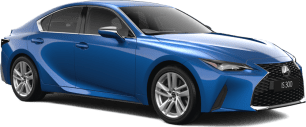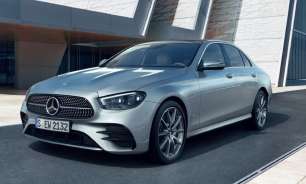The updated 2021 Lexus IS range has seen a number of pricing changes, and a reduction of variants, too. There are now five IS models available, down from seven prior to this update as the Sports Luxury model has been axed, and you can only get the IS350 in F Sport trim now. However, the company has expanded its “Enhancement Pack” strategy across the different variants.
Opening the range is the IS300 Luxury, which lists at $61,500 (all prices listed are the MSRP - not including on-road costs, and are correct at time of publishing). It has the exact same equipment as the IS300h Luxury model, which is $64,500, and that ‘h’ stands for hybrid, which will be detailed in the engines section.
The Luxury trim is equipped with items such LED headlights and daytime running lights, 18-inch alloy wheels, proximity keyless entry with push-button start, a 10.3-inch touchscreen multimedia system with satellite navigation (including live traffic updates) and Apple CarPlay and Android Auto smartphone mirroring tech, plus a 10-speaker sound system, eight-way power-adjustable front seats with heating and memory settings for the driver, and dual-zone climate control. There’s also auto headlights with auto high beam, rain sensing wipers, power steering column adjustment, and adaptive cruise control.
Indeed, there’s a raft of safety technology included - more on that below - and there’s also a number of Enhancement Pack options.
Luxury spec models can be equipped with a choice of two Enhancement Packs: the $2000 Enhancement Pack adds a sunroof (or moonroof in Lexus speak); or Enhancement Pack 2 (or EP2 - $5500) further adds 19-inch alloy wheels, a 17-speaker Mark Levinson sound system, cooled front seats, high-grade leather-accented interior trim, and a power-operated rear sunshade.
The IS F Sport trim line is available across the IS300 ($70,000), IS300h ($73,000) or the V6-powered IS350 ($75,000), and it adds a number of additional features over the Luxury grade.
As you can probably tell, F Sport models get a sportier look, with a body kit, 19-inch alloy wheels, standard fit adaptive suspension, sports front seats with cooling, sports pedals, and five drive modes to choose from (Eco, Normal, Sport S, Sport S+ and Custom). The F Sport grade also includes a digital instrument cluster with an 8.0-inch display, as well as leather-accented trim, and scuff plates.
Buying the F Sport grade allows customers to add further goodies by way of the Enhancement Pack for that grade, which costs $3100 and includes the sunroof, 17-speaker sound system and rear sunshade.
What’s missing? Well there’s no wireless phone charging in any grade, and no USB-C connectivity either. Note: the spare wheel is a space saver in the IS300 and IS350, but there is only a repair kit in the IS300h as there are batteries where the spare wheel would go.
There’s no go-fast IS F model sitting at the top of the tree here, nor is there a plug-in hybrid to compete against the circa-$85K BMW 330e and Mercedes C300e. But the fact the IS models all come in below $75K means it’s a pretty decent value proposition.

